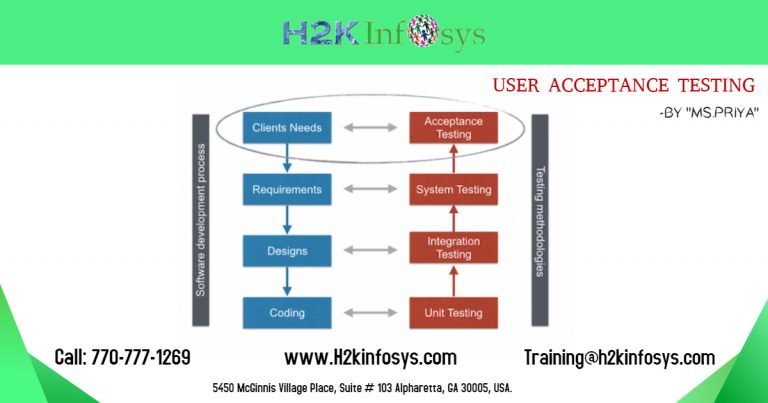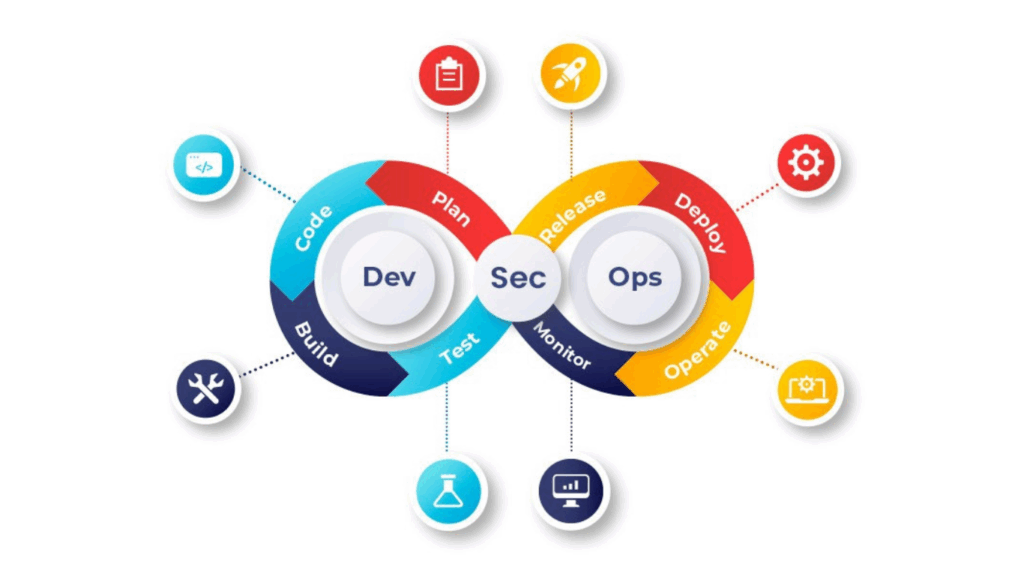User Acceptance Testing (UAT) plays a crucial role in the software development lifecycle, ensuring that the final product meets the needs of the users before it is released. It’s the stage where end-users test the software to verify that it behaves as expected in real-world scenarios. In this comprehensive guide, we’ll explore what UAT is, its significance, and how to effectively perform it. Whether you are a project manager, developer, tester, or stakeholder, understanding UAT is vital to delivering successful projects.
The user acceptance testing(UAT) is one among the different acceptance testing types performed on the the software application like: operational acceptance testing, business acceptance testing, contractual and regulatory acceptance testing.
What is User Acceptance Testing (UAT)?
User Acceptance Testing is a type of testing performed by the end-user or the client to verify that the system works according to their business requirements. UAT is the final phase of the testing process, occurring after functional, system, and regression testing. The primary goal is to validate the software in a real-world environment, ensuring that all functions perform as required before the software goes live.
Importance of UAT in the Software Development Life Cycle
UAT is critical because it is the final check to ensure the software solution is ready for release. Here’s why UAT is essential:
- Validation of Business Requirements: UAT ensures that the system aligns with business objectives and meets user expectations.
- Real-World Scenarios: Unlike other forms of testing that focus on technical functionality, UAT focuses on real-world usage and user experience.
- Detection of Bugs Missed During Other Testing Phases: Some issues might not be caught during earlier phases. UAT is the last chance to catch critical bugs.
- Stakeholder Confidence: Successfully passing UAT increases stakeholder confidence, leading to smoother rollouts.
Types of User Acceptance Testing
There are different types of UAT, each tailored to specific needs and scenarios:
Alpha and Beta Testing
Alpha Testing: Conducted in-house by internal employees in a controlled environment. The purpose is to identify bugs before releasing the software to a broader audience.
Beta Testing: Conducted by a selected group of real users in a live environment. Beta testers provide feedback on usability, functionality, and any issues they encounter.
Contract Acceptance Testing
This type of UAT ensures that the software meets the terms outlined in the contract, often required for Software testing certificate programs projects where specific deliverables are agreed upon.
Regulation Acceptance Testing (RAT)
RAT ensures that the software complies with legal or regulatory requirements. This is crucial in sectors like healthcare, finance, or government services, where compliance with rules and regulations is mandatory.
Operational Acceptance Testing (OAT)
OAT focuses on the system’s operational readiness, including checks on backups, security, and performance monitoring. This testing ensures the system is maintainable in a live environment.
Key Steps to Performing Effective User Acceptance Testing
To execute UAT efficiently, follow these key steps:
Defining Acceptance Criteria
Acceptance criteria are the pre-determined standards that must be met for the software to be accepted by the end-user. These criteria are typically derived from the business requirements and may include specific functional or performance metrics that the system must achieve.
Planning UAT
A detailed UAT plan should be prepared to outline the objectives, timelines, resources, and scope. A well-defined plan ensures that the testing process is organized and comprehensive. Key components of a UAT plan include:
- Test Scope: Define which features, modules, or workflows will be tested.
- Test Cases and Scripts: Develop detailed test cases that align with real-world user scenarios.
- Timeline: Establish clear deadlines and milestones.
- Roles and Responsibilities: Assign testers and identify the key stakeholders responsible for testing.
Designing UAT Test Cases
The success of UAT depends on how well the test cases are designed. Test cases should cover real-world scenarios and edge cases that users are likely to encounter. Collaborating with end-users or subject matter experts can help ensure that the test cases reflect actual business processes.
Setting Up the Testing Environment
The UAT environment should closely resemble the live environment in which the software will operate. This includes setting up hardware, software, databases, and other configurations to mimic the production environment.
Executing UAT
Once the environment is ready and test cases are developed, it’s time to execute the UAT. End-users or designated testers perform the tests and document the results. Any issues or defects found during this process are logged for further investigation.
Gathering Feedback and Documenting Issues
As the testers execute the test cases, they should document any issues, bugs, or usability concerns. It’s crucial to capture detailed feedback, which will be reviewed and addressed before the software is deployed.
Addressing Issues and Re-Testing
Once issues are identified, the development team works on fixes. After the fixes are implemented, re-testing is conducted to ensure that the software meets the acceptance criteria.
Obtaining Sign-off
Once all test cases have passed and the users are satisfied with the system, a formal sign-off is obtained from stakeholders, marking the end of UAT. This sign-off indicates that the software is ready for release.
Best Practices for User Acceptance Testing
To ensure the success of UAT, consider these best practices:
Involve Stakeholders Early
Involving stakeholders and end-users early in the development process ensures that their requirements are fully understood and incorporated into the final product. This reduces the likelihood of significant changes during UAT.
Focus on Real-World Scenarios
UAT should be based on real-world scenarios rather than hypothetical situations. This ensures that the software meets the practical needs of users.
Prioritize Critical Test Cases
Focus on high-priority test cases that cover the most critical business functions. Ensure that these are thoroughly tested to avoid critical failures post-launch.
Provide Clear Documentation
Ensure that the UAT plan, test cases, and any issues identified are well-documented. Clear documentation helps all stakeholders understand the process and decisions made during UAT.
Allocate Sufficient Time
Rushing UAT can lead to missed issues and defects. Ensure that adequate time is allocated for thorough testing, feedback gathering, and issue resolution.
Use Automated Testing Tools (Where Applicable)
While UAT is primarily a manual process, incorporating automated testing tools for repetitive tasks can save time and reduce errors. Tools like Selenium or TestRail can assist in automating some aspects of UAT, like regression testing.
Recommended To Read Also: Software testing course and placement
Conclusion
User Acceptance Testing is a critical phase in the software development lifecycle, ensuring that the final product meets the needs of its users and aligns with business objectives. By following a structured approach to UAT, involving stakeholders early, and focusing on real-world scenarios, teams can ensure that their software is ready for release with minimal risks.
For any business or development team, UAT serves as the last line of defense against defects and misalignment with user expectations. By allocating sufficient time and resources to this phase, you can increase user satisfaction, reduce post-launch issues, and achieve successful project delivery.






























38 Responses
Need of user acceptance testing:
User acceptance testing is needed to build the confidence in the quality of the software, and ensure usability of the software before the software is released to production.
User acceptance testing is one of the important testing. It will verify and satisfy the clients requirements prior to releasing it. Intended users has a lot more to say through feedback if the system work the way it should be. They are the one who knows the business or how it should work better than anyone.
User acceptance testing is needed to build confidence in the quality of software, and ensure usability of the software before the software is released to production
User acceptance testing is needed to build confidence in the quality of software, and ensure usability of the software before the software is released to production environment.
User acceptance testing is performed by users to check if the software meets Their requirements. It tests the completeness and user friendliness of the product. It ensures confidence in quality of software before it is released into the production environment.
The main purpose of the user acceptance testing is to verify end to end business flow. It does not give much importance to system errors or system testing. UAT works on the specific requirements of the user. If supplier agrees on the product then the software is developed legally, practically. In UAT testing the user should possess a good knowledge of the business requirements. User should be capable of thinking independently. It is classified as alpha and beta testing. UAT is performed after the system testing and major defect have been fixed. This type of testing is done at the last stage of SDLC.
. User acceptance testing is needed to build the confidence in the quality of the software, and ensure usability of the software
before the software is released to the client.
The types of user acceptance testing is:
1 Alpha testing and
2 Beta testing
User acceptance testing is needed to build confidence in the quality of software, and ensure usability of the software before the software is released to production environment.
User acceptance testing is last step of manual testing. It is needed to build confidence in the quality of software, and ensure usability of the software before the software is released to production environment. This type of testing is done in two different environment; Alpha testing and Beta testing.
-Alpha testing is done in the development area by the clients or customers.
-Beta testing is done in the customer’s environment by the customers and it is called as field testing.
User acceptance testing is needed to build confidence in the quality of software, and ensure usability of the software before the software is released to production environment.The main purpose of the user acceptance testing is to verify end to end business flow.
User acceptance testing is needed to build confidence in the quality of software, and ensure usability of the software before the software is released to production environment.
User acceptance testing is performed by the intended users of the software to check if the system meets their expectations. the user friendliness and completeness of the software application is tested. UAT can be either alpha testing or beta testing. It is also called as application testing or end-user testing.The main purpose of the user acceptance testing is to verify end to end business flow.
User acceptance testing is needed to build confidence in the quality of software, and ensure usability of the software before the software is released to production environment
we need user acceptance testing to build confidence in the quality of software and ensure usability of the software before the software is released to production environment.
What is the need for UAT?
Answer:
UAT is done at the last stage of SDLC and its main purpose is to verify end to end business flow. It overlooks system errors or system testing. UAT works on specific requirements of the user.
If the supplier agrees on the product then the software is developed legally, practically ?????
During UAT, the user must possess good knowledge of the business requirements and be capable of thinking independently.
UAT is needed to build confidence in the quality of software and ensure its usability before its release in the production environment.
UAT, user acceptance testing is needed to build confidence in the quality of software and to ensure the usability of the software before it is released in the production environment. UAT is performed to verify if the system meets the expectations. It’s an application testing or end users testing use to verify end to end business flow. UAT is done in two different environments: Alpha testing and Beta testing.
1.What is the need of user acceptance testing
User acceptance testing is needed to build confidence in the quality of software, and ensure usability of the software before the software is released to production environment.
User Acceptance Testing is needed to build confidence in the quality of the software and usability of software before it is release to product environment.It is further classified into alpha and beta testing.It is to meet the requirement of the client and user.
UAT is the last phase of the software testing process. During UAT, actual software users test the software to make sure it can handle required tasks in real world scenarios according to specifications.
What is the need of user acceptance testing?
In UAT, The users test whether the software is as per the client requirements. The need for UAT is to provide confidence that it is a quality software before the software can be released to the production environment.
User acceptance testing is needed to build confidence in the quality of software, and ensure usability of the software before the software is released to production environment. The types of user acceptance testing is:
Alpha testing and
Beta testing
User acceptance testing is needed to build confidence in the quality of software, and ensure usability of the software before the software is released to production environment.
User acceptance testing (UAT) is the last phase of the software testing process. During UAT, actual software users test the software to make sure it can handle required tasks in real-world scenarios, according to specifications
User acceptance testing is needed to build confidence in the quality of software, and ensure usability of the software before the software is released to production environment. The types of user acceptance testing is:
Alpha testing and
Beta testing
User acceptance testing is needed to build confidence in the quality of software, and ensure usability of the software before the
software is released to production environment.
User acceptance testing is needed to build confidence in the quality of software, and ensure usability of the software before the software is released to production environment.
The main purpose of the user acceptance testing is to verify end to end business flow. It does not give much importance to system errors or system testing. UAT works on the specific requirements of the user. If supplier agrees on the product then the software is developed legally, practically. In UAT testing the user should possess a good knowledge of the business requirements. User should be capable of thinking independently. It is classified as alpha and beta testing. UAT is performed after the system testing and major defect have been fixed. This type of testing is done at the last stage of SDLC.
The main purpose of the user acceptance testing is to verify end to end business flow. It does not give much importance to system errors or system testing. UAT works on the specific requirements of the user. It build confidence in the product .It is classified as Alpha and Beta Testing. It is done at the last stage of the SDLC.
User acceptance testing is needed to build confidence in the quality of software, and ensure the usability of the software before the software is released to the production environment.
types of user acceptance testing is:
Alpha testing is done in the development area by the clients or customers.
Beta testing is done in the customer’s environment by the customers and it is called field testing.
User acceptance testing is needed to build confidence in the quality of software, and ensure usability of the software before the software is released to production environment.
The User Acceptance Test (UAT) is a basic segment of any IT usage. The objective of a UAT is to approve if a framework or arrangement will address the issues of business clients in their operational condition.
The last stage of the software testing process is known as UAT. This UAT process plays an important and crucial role as it validates whether all the business requirements have been fulfilled or not before releasing the actual product.
1. What is the need of user acceptance testing?
– UAT is important because is accurately tests if the software will be able to be used by the business on a day to day basis in real world circumstances.
1. To check whether it is user friendly.
2. To check the quality and usability of the software before it is released in the production environment.
3.To check whether it meets the specific requirements of the software.
The need for user acceptance testing: Before the software is released into the production environment, user acceptance testing is required to raise confidence in the software’s quality and ensure the usability of the software. User acceptance testing verifies end to end business flow, user friendliness and completeness of the software application, and whether the software meets expectations.
User acceptance testing is test done by the intended users of the software to ensure it meets their expectations. The user friendliness and completeness is tested to make sure it is product suitable to the audience. The main purpose of the test is to verify end to end business flow, it is not a system error check, but to make sure it meets a set of specific requirements made by the user. The UAT is needed because is builds confidence in the quality of the software and confirms usability of the software before it is released to production environment.
The need for User Acceptance Testing is to build confidence in the quality of the software and to ensure the usability of the software before the software is released in production environment .Its main purpose is to verify end to end business flow.
User acceptance testing is needed to build confidence in the quality of software, and ensure usability of the software before the software is released to the actual production environment it will be used in.
User acceptance testing is needed to build confidence in the quality of software, and ensure usability of the software before the software is released to production environment. The types of user acceptance testing are:
1. Alpha testing
2. Beta testing
Alpha testing is done in the development envirnoment by the clients or customers.
Beta testing is done in the customer’s environment by the customers and it is called as field testing.
Use Acceptance Test :
User acceptance testing is performed by the users of the software to check if the system meets their expectations.
The main purpose of the user acceptance testing is to verify end to end business flow. It does not give much importance to system errors or system testing.
UAT gives details about system layout and its reactions on user actions.
All the information that you shared with us is very useful for us. Thank you for sharing this information with us.